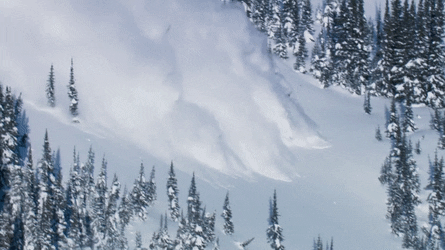Too many good avy ed resources are coming my way to not share the wealth before another bc ski season. Plus, I have an increasing number of friends who are acquiring gear, dipping their toe into the scene, and trying to make sense of what the next steps are to become backcountry savvy. Let’s start with this quick graphic…

This graphic is pure gold! I was so confused my first year about what to do and where to get schooled after getting frame bindings and skins that would allow me to uphill. I jumped into a three day avalanche class and it felt like being tossed into the deep end. There was so much background knowledge, terms, gear, etc., that I half the time I struggled to know what they were talking about! A couple of years later I attended a intro to backcountry class with my wife and realized that would have been a much better place to start… heck even doing some tours with friends would have been nice. (*Sadly, I didn’t have any #bcskifriends at this point and thus stumbled for a good while, additionally that is one of the reason why I started this website/email list, ahh, full circle!)
Feel free to email if you’d want to chat more about what you progression might look like. Here is a progression of items to consider…
STEP 1 / 1st YEAR OF UPHILL SKIING
- Go tour! Gear is the true first step, but once you have that box checked find a friend, acquaintance, or hire a guide to sort out all of your gear and help you make sense of getting on the skin track.
- It hasn’t happened yet in our area, but soon enough I’d imagine ski schools will offer “uphill skiing” lessons for those interested. Consider advocating for this at your local hill, or inquiring with the ski school.
- Intro to backcountry class is a great step if you can find one that works for you schedule.
- Subscribe to a handful of organization’s newsletters, or follow them on social media to keep a pulse. If you need suggestions drop me a line.
STEP 2
- Look to jump in a three-day course as an important quiver in your cap as a next step in your schooling. There is a lot of variability of who offers these types of classes (e.g. AIRE, AAA, etc) depending on where you live, but get involved in the best you can find.
- An in-person course is the gold standard, but there are some really cool developing resources like Mtn Sense to check out too.
- Avalanche.org offers brief, accessible and free tutorials on fundamental information including gear, terrain and rescues, as well as links to avalanche conditions and course providers.
STEP 3 AND BEYOND
- Keep up the learning and don’t stop reading, listening to podcasts, signing up for classes, and growing your backcountry acumen through online and in-person opportunities.
- A handful of friends have found this ski mountaineering course useful and then have recently been trying to determine when we will jump in a level 2 class. These seem ideally taken on-site at a backcountry ski cabin where a heli-drop is involved if possible.
WEEKLY LINKS ROUND-UP…

FRIENDS TO THE NORTH
Speaking of gold standard Avy Education, the Canadians sure have a well-developed system. I was interested and impressed to learn that Kootenay Avalanche is offering a free online avalanche refresher through Zoom, next Tuesday, November 24, from 7:00 – 8:30 pm PST. Check them out!
Additionally, avalanche Canada is hosting a weekly webinar. Check out the schedule here and the past recorded events here.
SNOW SKIING… SLALOM WATER SKIING STYLE
My jaw dropped when I ran across this video… and then after a little more digging deeper and learning it is called Skwalling and apparently it is a “thing.”
I’M HERE FOR THE STOKE?
If you are not interested in the avy saavy recommendations, or the oddity found in that last video, gander upon this… e-bike mountaineering, what!?
Hang in there while winter really gets cued up. Ullr is just doing his thing and taking his time. Hope to see you out on the hill and don’t hesitate to write and ask questions, spitball about what you are thinking for this winter, etc.
Bring it Ullr!
-Landon

